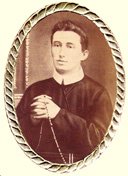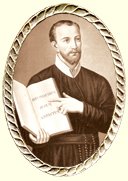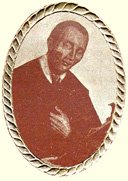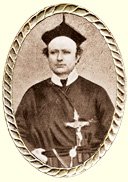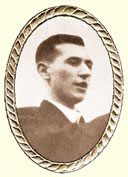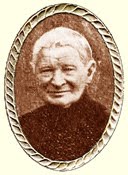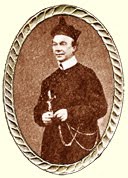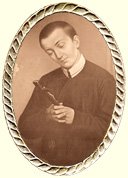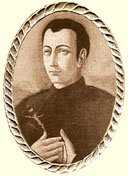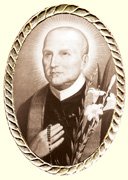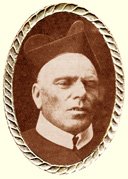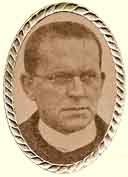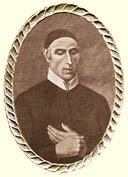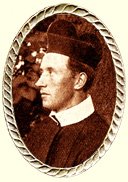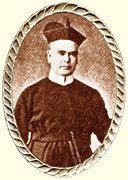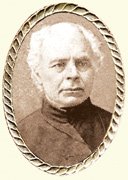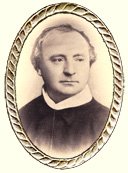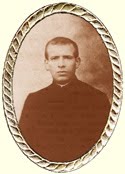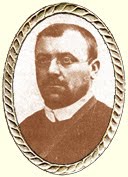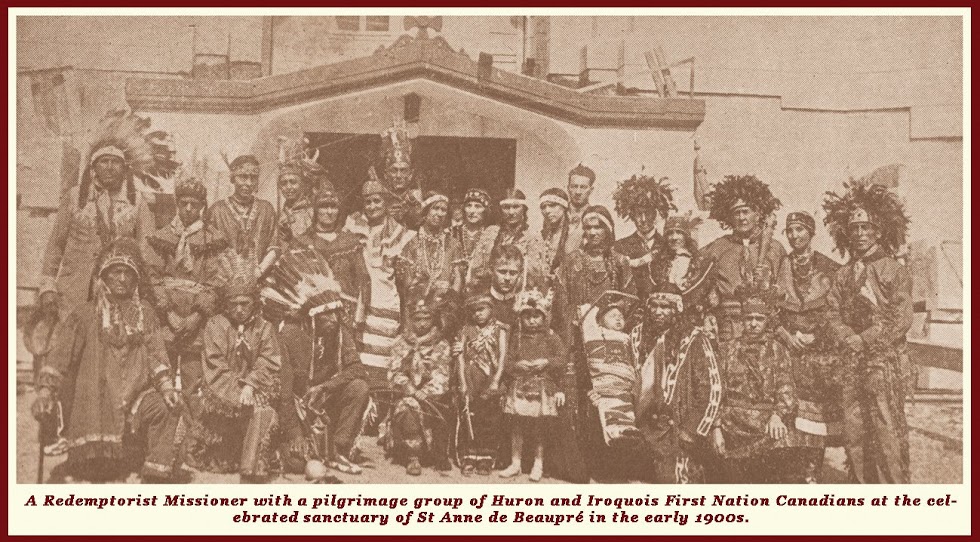
(Here follows a more extensive necrology of the Servant of God than previously published.)
The Servant of God, Fr Giuseppe Leone, was born to Nicola Francesco Leone and Rosa di Biase in Trinitapoli, Bari Italy on 23rd May, 1829. He was baptized the following day in the parish church of St. Stephen Protomartyr, and on 1st May 1833 he received the Sacrament of Confirmation from the Archbishop of Trani.
As a child Giuseppe, though restless and lively, demonstrated piety and a tender love for Mary and for Jesus in the Most Holy Sacrament of the Altar. One of many boys in his family, Giuseppe Maria was a joy to his parents, always affectionate and willing to follow their guidance. He had remarkable gifts of intellect and memory, demonstrating much wisdom even in his youth.
At thirteen years of age he entered the diocesan seminary in Trani. Giuseppe had already experienced the loss of his mother, and one night he saw an apparition of Our Lady. She assured him that she intended to take him into her care, saying "You are mine."
Thereafter he decided to embrace a more perfect vocation and become part of the Redemptorist Order. Using the excuse of going to the feast of the patron of the nearby town of Cerignola, he went to visit the Redemptorists with high hopes of joining their Congregation. However, due to the delicate condition of his health, he was refused by the superiors of the Institute.
Giuseppe did not give up hope, and eventually through steadfastness and prayer, he received an invitation from the Redemptorists to come to Nocera dei Pagani that his vocation might be considered. After a favourable interview, the Superior General approved his request to join the order, but only after he obtained the approval of Nicola, his father. This approval was not granted to Giuseppe at first, because it had always been his father's desire that his son should become a secular priest.
Upon his return home, his father was adamant and even refused to allow him into the house. Giuseppe went to a monastery of Andria where he remained for about two months, in the midst of prayers and tears, hoping to obtain from God a change in his father's will. Eventually, however, the continuing battle with his father and his relatives caused him so much dismay, that the poor young man fell prey to a serious case of malaria.
Then, in the midst of such misery, he experienced a vision of Jesus under the appearance of a youth, full of gentle majesty. He was filled with the feeling that, although all of his family was against his vocation, Our Lord was in favour of it. Just a few short days after that comforting vision, Giuseppe got up out of bed perfectly healed and unexpectedly received the consent from his father and the approval of everyone else who had previously opposed his request.
At the age of 21 years in 1850, Giuseppe Maria Leone was clothed as a Redemptorist and the year after he made his Profession. Initially he was sent to complete his studies in Iliceto, but later in 1852 he moved to Vallo de Novi because the conditions of the area were more suitable to his health, and there he completed his studies. In 1854 he received the long-awaited ordination to the priesthood.
His ordination changed his life deeply and supernaturally. Considering that his regular studies were incomplete through reasons of ill health, his ability to interpret Holy Scripture and Patristics was considered miraculous. He was unable to join the Missions and was instead continuously occupied with the Spiritual Exercises for priests, religious and seminarians.
Under the law of suppression in 1865 he was forced to return to the family home in Trinitapoli, where he soon gained the esteem of all. There he was appointed director of the congregation of the church of St. Joseph, where he spent long hours in the confessional hearing the confessions of the women. However, the men felt more at ease going to confession at his house, which was often filled with penitents, especially in the time of Lent, when the stairs and hall were often crowded to overflowing.
It became widely known that he could see what lay in people’s hearts and consciences. Father Leone was chosen by nearly all the priests of the surrounding country as their confessor and as the spiritual director of their consciences. He would talk to Mary with real familiarity, and she would often appear, consoling or inspiring him and also dictating entire sequences of the many books that he was to write. He was known to have the gifts of prophecy and bilocation, and was revered by all as a saint.

Events occurred which could only be explained by Divine intervention, and these served to increase the esteem and confidence of the people in their holy confessor. One well known incident took place when the house of the Servant of God was full of people waiting for confession. All of a sudden Father Leone got up, and going out into the midst of all the penitents, he said, "Whatever happens, do not be afraid, I am with you." Not ten minutes later, the strong jolt of an earthquake was felt, shaking the entire house. He calmly smiled and encouraged everyone, inviting them to resume their preparations for confession.
In 1867 cholera broke out in Trinitapoli resulting in many deaths among the people. The disease reached epic proportions, and about thirty people were dying daily. Father Leone, though suffering himself, worked to relieve those affected by the disease. He proposed that the population of Trinitapoli should seek the intercession of Our Lady of the Sacred Heart and asked the people to have recourse to her with confidence The people responded with genuine enthusiasm, and began a novena.. At the end of the novena, the cholera disappeared miraculously.
Grateful for such a wondrous response from heaven, Father Leone gathered a collection from the citizens to procure a statue of Our Lady of the Sacred Heart from artisans in Naples. The statue came towards the end of that year, and was accepted by the people with great enthusiasm. This statue was later known as the Madonna of Father Leone, or the Madonna of Cholera.
It was during the cholera epidemic that the Servant of God lost his father. Old Nicola, already advanced in years, was struck by the disease. He died in the arms of his son without anguish, giving up his soul to God. After his death, Father Leone continued to reside in the family home, along with his older brother's family.
In 1877, he became seriously ill, so much so that doctors had given up on his recovery. But all of a sudden, against all odds, he recovered completely. He attributed this to a very special grace of Our Lord, which seemed intended to prolong his life so that it could be the spent for the salvation of sinners. Afterwards, Father Leone not only continued his apostolate of prayer and works for salvation more intensely, but he also offered himself as a victim soul to expiate the sins of others.
His suffering, in fact, did increase more and more, and became an unremitting martyrdom. His pains would grow stronger during the periods in which people gave in more easily to the temptation to sin, as in times of carnival, holidays, etc. Then his sufferings increased so much that it seemed he was near death.
In 1880, Father Leone was called by Superior of the Congregation to move to Salerno. He was ready to obey, and was sadly resigned to go to his new assignment. But the people who loved and venerated him as a saint, did everything possible to restrain him, and at the time of his departure, with tears in their eyes, accompanied him to the train.
He remained in Salerno for the remaining 22 years of his earthly life. There, despite being tested physically by his sufferings, he continued to engage in apostolate works. The fame of his holiness spread everywhere. Wonderful was the good that by his word and example was produced in the souls consecrated to God. From all sides came the faithful came to confess to him, to ask for advice, seeking the comfort of his words and his prayers. Those who could not meet with him in person, wrote letters to which he replied with great kindness and patience.
He soon became the confessor and spiritual director Dr. Bartolo Longo and his wife, founders of the Shrine of our Lady of the Rosary in nearby Pompeii. For twenty years, while remaining on the side-lines, Father Leone was one of the main architects of the religious works connected with the miraculous image of Our Lady of Pompeii. Besides guiding the construction of the great church, he was the soul and the inspiration of the many initiatives undertaken at Pompeii to promote the Rosary, to support religious vocations, and to provide for the newly established orphanage.
Father Leone had lived such an intense and fruitful life, and had become so physically exhausted from continual suffering, that the faithful were kept in constant apprehension for his life. However, to their surprise, he always remained calm and serene, and brought forward the work entrusted to him by the Divine Will, until it came to the time marked by God for him to go to receive the reward of his virtues.
Rich in merit and years, and mourned by all, he ascended to God on the 9th August 1902, at the age of 74. The graces received through his name have been numerous. The body of this Servant of God was buried in the cemetery of Angri and then in 1920, on the 13th October, he was moved to Pagani and laid to rest in the chapel of the Redemptorist Monastery, where St. Alphonsus’ mortal remains had reposed for several years. †















 The site explains that the Hafkenscheid family (Hafke = Habicht = havik = hawk, Scheid = Flurgrenze = borderline between estates) has taken its name from the former Havkenscheid castle in the hamlet of the same name near Bochum, Westphalia. In 1340 Deitrich von Havekenscede was vassal of this castle and is the ancestor of a family that has held it in fee until the seventeenth century. There are several indications that his family is connected to that of Fr Bernard.
The site explains that the Hafkenscheid family (Hafke = Habicht = havik = hawk, Scheid = Flurgrenze = borderline between estates) has taken its name from the former Havkenscheid castle in the hamlet of the same name near Bochum, Westphalia. In 1340 Deitrich von Havekenscede was vassal of this castle and is the ancestor of a family that has held it in fee until the seventeenth century. There are several indications that his family is connected to that of Fr Bernard. While the site is probably relevant only to scholars of the great Missioner, still the fact that it gives some mortuary cards of relatives is a rather unique and personal resource in reference to the life of this Father which we are serializing. Also much of that life in the early chapters is drawn from letters written home by Father as a seminarian to the reading of which we are told all the members of the direct and even extended family and friends were invited by his father, Michael. Thus these are the people who were there and followed the career of their great uncle.
While the site is probably relevant only to scholars of the great Missioner, still the fact that it gives some mortuary cards of relatives is a rather unique and personal resource in reference to the life of this Father which we are serializing. Also much of that life in the early chapters is drawn from letters written home by Father as a seminarian to the reading of which we are told all the members of the direct and even extended family and friends were invited by his father, Michael. Thus these are the people who were there and followed the career of their great uncle.











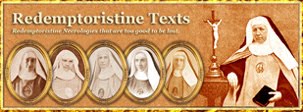
.jpg)









